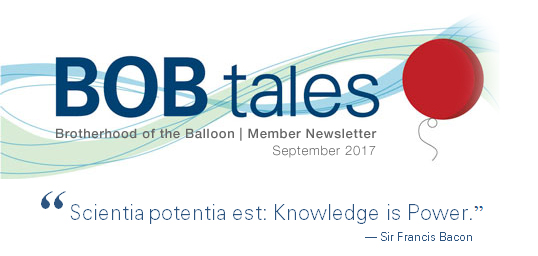
Dear Members:
The BOB Tales is blessed with a large and growing readership. Feedback we receive each month tells us we are providing value to our members and the hundreds of others who are on our distribution list. Constant Contact, our email newsletter distributor, services 600,000 clients. They have told us that our “open- and click-through” rates are the highest of any of their clients. Clearly, that means our readers are interested in the content of our newsletters.
We are frequently asked how/why the BOB Tales is formatted as it is, and the source of the information we present each month.
While our membership consists of men who have been diagnosed with prostate cancer, we all have family members, friends, or acquaintances who may or may not have been diagnosed or who may be at risk for prostate cancer. So, much of the information we provide in our newsletters is intended not only to help members but also to provide information than can benefit friends and loved ones.
We focus our newsletter on the latest developments in prostate cancer prevention and detection, as well as proactive steps our members can take to prevent a recurrence and metastasis. We also focus on what we believe to be the best treatment option for localized prostate cancer—proton therapy. We are also proponents of active surveillance for early stage, indolent disease.
This month’s BOB Tales covers a lot of ground. New studies show the benefits of proton therapy, variables that can increase or decrease prostate cancer risk, foods that can prevent prostate cancer or lower the risk, and ways to lose weight through your choice of foods. We also talk about foods people consume every day that promote prostate cancer, as well as other cancer growth.
Also in this month’s issue is help for those who are denied insurance coverage, a growing problem. We have some valuable information from past newsletters as well as other information of interest and some great humor.
The “Lighter Side” and “Odds & Ends” are included to lighten things up a bit, considering the seriousness of the primary subject matter. Interestingly, many members tell us these sections are often the first they turn to when a new issue of the BOB Tales comes out. Our good friend the late Ken Venturi once told us, “I read your newsletters cover to cover every month, but the first thing I read are the jokes.”
The “Final Thought” segment is there to leave you with something to think about—something that may make you smile or perhaps influence a change in your thinking about life and the people in your life.
Our sources of information are many. These include The Mayo Clinic Health Letter, Johns Hopkins Medical Health Letter, Dr. Charles Myers’ Prostapedia, Men’s Health magazine, Bottom Line Personal magazine, Google Alerts on “prostate cancer” and “proton therapy,” a number of online health letters such as RealAge, newsletters from various proton centers, and countless email recommendations from members all over the world who come across articles and studies they feel would be of interest to our readers. Each month we find we have far more material than we could use, and we struggle to whittle it down to information we believe would be of most interest and benefit to our members.
My daughter, Deb’s influence on the BOB Tales has been profound. When I look back at newsletters from the early 2000s, I wonder why anyone would have read them.
I hope you enjoy the September issue. As always, we welcome your feedback and suggestions—just send an email to [email protected].
Bob Marckini
P.S. September is National Prostate Cancer Awareness month. It’s a good time to remind family members and friends to make sure they are having annual physical exams, part of which should be a PSA test for males 50 and older, or 40 and older if they are at increased risk for prostate cancer.
To print the BOB Tales newsletter or view the newsletter with a larger font size, click here for the PDF file.
In This Issue:
- Another Study Shows Proton Therapy Reduces Secondary Cancer Risk
- High Blood Sugar May Increase Prostate Cancer Death Risk
- The Role of Soy Foods in Prostate Cancer Prevention and Treatment
- Researchers Confirm Prostate Cancer Surgery May Not Save Lives
- A Member’s Successful Insurance Appeal Letter
- Watermelon—the Nutritional Superstar
- A Miracle Health Drink
- 14 Foods That Help You Peel Off the Pounds
.jpg)
Another Study Shows Proton Therapy Reduces Secondary Cancer Risk
MedicalPhysicsWeb published a study on May 23, 2017, showing that proton therapy may significantly reduce the risks of radiation-induced secondary cancers.
The study was conducted at the Karolinska University Hospital and Stockholm University, both in Sweden. Researcher and oncologist Gracinda Mondlane M.D. and her colleagues compared the risks of treating liver metastases with photon (X-ray-based) stereotactic body radiation therapy (SBRT) with intensity modulated proton therapy (IMPT).
Models used “were able to quantify the risks to the patients’ whole-body, as well as to particular tissues of interest, alongside considering the heterogeneity of the dose distribution produced in the organs-at-risk and the effects of treatment fractionation,” according to the study.
Using IMPT, the risk of inducing fatal cancer decreased from as much as 2 percent to as much as 1 percent. While this may seem small, it is a 50 percent reduction. And the risk of inducing secondary cancers in general fell from a median value of 14 percent down to 4 percent—a 71 percent reduction.
Why is this interesting to us prostate cancer patients?
We too, have sensitive organs and tissue located in close proximity to our prostates. When high doses of radiation are delivered to that region in our body, we want as little “collateral damage” as possible to our rectum, bladder, testicles and other body parts in our pelvic region. Proton offers a clear advantage, even over the most advanced forms of photon (X-ray) radiation.
High Blood Sugar May Increase Prostate Cancer Death Risk
Researchers at the Johns Hopkins Kimmel Cancer Center and the Johns Hopkins Bloomberg School of Public Health collected data on more than 5,000 men enrolled in the Atherosclerosis Risk in Communities Study, a prospective national study of heart disease that began in 1987. They also tracked glucose levels in the blood.
Previous studies have shown inconsistent results for the association between high blood sugar levels and prostate cancer death. Researchers say hyperglycemia may promote how cancer cells multiply. To understand why different biomarkers of glucose had different associations with prostate cancer death, researchers at Johns Hopkins Bloomberg School of Public Health used three biomarkers to better classify normal blood sugar levels and hyperglycemia. They found that men who were classified as hyperglycemic on all three tests had nearly five times increased risk of prostate cancer death compared with men who were classified as normal on all three tests. Men classified as hyperglycemic using one of the tests had twice the risk of dying of prostate cancer.
The Role of Soy Foods in Prostate Cancer Prevention and Treatment
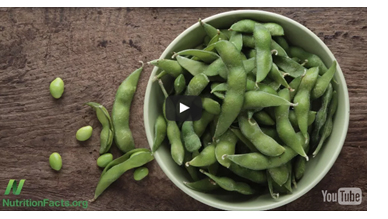 NutritionFacts.org published a video reporting that soy food products likely play a protective role in preventing prostate cancer, helping to prevent a prostate cancer recurrence and helping to prevent metastasis. Soy containing foods include soy milk, soybeans, tofu, miso, and tempeh.
NutritionFacts.org published a video reporting that soy food products likely play a protective role in preventing prostate cancer, helping to prevent a prostate cancer recurrence and helping to prevent metastasis. Soy containing foods include soy milk, soybeans, tofu, miso, and tempeh.
The video indicates that most of the studies were conducted in Asia where tofu consumption is high. But what about a western population that ate a lot of soy products? That would be revealing. As the video points out, there is a western population that consumes a lot of soy products: Seventh-day Adventists! And the highest concentration of Seventh-day Adventists is in Loma Linda, CA.
In the 1970s more than 12,000 Adventist men were asked about the frequency of their use of soy milk. They were followed for 16 years to track who got cancer and who didn’t. The conclusion? Frequent consumption of soy milk was associated with a whopping 70 percent reduction in prostate cancer diagnoses.
It appears that soy products contain components that help prevent prostate cells from becoming cancerous. They also help prevent localized cancer from metastasizing. This is important because it’s not the primary prostate cancer that can kill you—it’s the metastatic cancer.
One might ask, “Isn’t it true that people who consume soy products probably also consume a healthful plant-based diet rich in fruits and vegetables? The answer is “yes.” But the report includes some compelling evidence for the key role played by soy products.
The video also points out the dangers of eating dairy products. Men randomized in a study who consumed milk products got six times more prostate cancer than those in the soy group.
“Dairy products are not just associated with getting prostate cancer, but also dying from prostate cancer,” according to the report. “Men diagnosed with prostate cancer who ate dairy products tended to die sooner.”
Researchers Confirm Prostate Cancer Surgery May Not Save Lives
A number of media outlets last month carried this story in different contexts. A 20-year study by a research team including Washington University School of Medicine and led by the Minneapolis Veterans Administration Health Care System, “overwhelmingly supports growing evidence that prostate cancer surgery performed on men in the early stages of the disease offers very few benefits.”
One report stated that “surgery did not prolong life and often caused serious complications such as infection, urinary incontinence and erectile dysfunction.”
The thrust of the article is that men with early stage disease should consider Active Surveillance, and if treatment is required at some point in time, patients should think twice about the trauma, invasiveness and side effects associated with surgery. Several non-surgical options are available that offer effective disease control with significantly fewer side effects. Proton therapy certainly fits into that category, and may be the best example.

Protons and Triathlons
Registered for Sprint Triathlon During Proton Treatment
BOB member Hugh Armitage was treated with proton therapy for his prostate cancer in 2009. “When I was being treated, I never thought about how certain aspects of my experiences at Loma Linda University Cancer Center would profoundly impact and influence my ‘post-proton’ life,” Hugh said. In treatment, he remembers LLUCC’s Director of Special Services telling new patients that he expected to see all of them at the facility’s fitness center regularly and that exercise and adopting a proper diet was part of LLUCC’s overall philosophy to “Make Man Whole.”
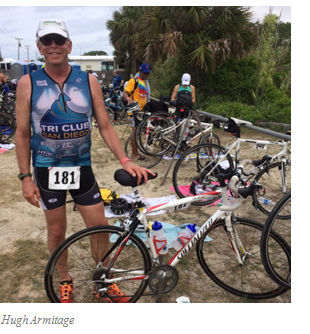 Hugh took that advice seriously. He began to swim on a regular basis at the fitness center’s pool; he rode his bike daily around town; and at the urging of his daughter, during her visit early on in his treatment, Hugh began running. “At that time, I had not run in probably 36 years,” Hugh said. “The first mile with her was brutal.” But Hugh persevered. And soon after, he did something he never would have considered doing in his younger days—he signed up for the “Tinman” sprint triathlon in neighboring town, San Bernardino, during his proton treatment.
Hugh took that advice seriously. He began to swim on a regular basis at the fitness center’s pool; he rode his bike daily around town; and at the urging of his daughter, during her visit early on in his treatment, Hugh began running. “At that time, I had not run in probably 36 years,” Hugh said. “The first mile with her was brutal.” But Hugh persevered. And soon after, he did something he never would have considered doing in his younger days—he signed up for the “Tinman” sprint triathlon in neighboring town, San Bernardino, during his proton treatment.
We recently checked in with Hugh. Eight years after treatment, he tells us he’s feeling great. He works full-time; he frequently takes part in local road races; he bikes, and he swims. Hugh recently completed a triathlon in Florida followed by his 200th competitive event at a half marathon in Atlanta.
Completed First Triathlon after Proton Treatment
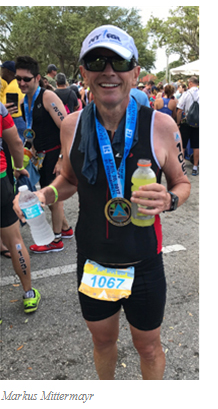 BOB member Markus Mittermayr certainly didn’t let prostate cancer slow him down; in fact, we think Markus sped up after receiving proton therapy at the University of Florida Health Proton Therapy Institute in 2010. Two years after his treatment ended, he completed his first Ironman Triathlon in New York City. His overall time was 12 hours, 43 minutes, 46 seconds. “Not bad for a 2.4-mile swim, 112-mile bike ride, and then a 26.2-mile run,” Markus said.
BOB member Markus Mittermayr certainly didn’t let prostate cancer slow him down; in fact, we think Markus sped up after receiving proton therapy at the University of Florida Health Proton Therapy Institute in 2010. Two years after his treatment ended, he completed his first Ironman Triathlon in New York City. His overall time was 12 hours, 43 minutes, 46 seconds. “Not bad for a 2.4-mile swim, 112-mile bike ride, and then a 26.2-mile run,” Markus said.
We recently checked in with Markus. He has since completed the New York City marathon, Chattanooga Ironman Triathlon, St. Anthony’s Olympic Triathlon (2x), the Boston Marathon, the Panasonic NYC Olympic Triathlon, and he’s signed up for the Vienna, Austria marathon in 2018. He’s also a race car driver.
It must be the protons!
Successful Insurance Appeal Letter
Many of our members have been denied health insurance coverage for proton therapy treatment of their prostate cancer. While some decide to pay out-of-pocket or choose alternative treatments, many decide to fight—and fight hard—to obtain coverage for proton therapy. If you are facing an insurance denial, the following information may help.
One of our members successfully appealed a denial with a major insurer (which we will refer to as “ABC Healthcare”) and has allowed us to share his letter with our members. We believe this letter could be valuable to those looking for help in overturning a denial. It has been cut down for spacing reasons and names have been removed or masked for privacy purposes. If you would like a complete copy of the letter, send an email to [email protected].
Dear ABC Healthcare Grievances Unit:
“XYZ Medical Group” of San Luis Obispo denied my request for proton beam radiation therapy treatment at Loma Linda University Cancer Center, claiming a “lack of medical necessity” in my case, and stating “the current role and efficacy of proton beam radiation therapy, for treatment of prostate cancer, remains uncertain and is not considered medically appropriate”
I am appealing this denial for the following reasons:
Reason 1: Necessary and Appropriate Treatment
Prostate cancer progresses to cancer of the lymphatic system and/or bone cancer, and eventually, death. Conformal proton beam radiotherapy for prostate cancer is a therapy that has been FDA approved and has important differences from all other modalities of treatment for prostate cancer, which is especially important for my specific situation.
… Other prostate cancer therapies often result in fecal incontinence and/or urinary problems, any of which would endanger the performance of my work duties and, ultimately, jeopardize my ability to earn a living. Conformal proton beam radiotherapy is extremely effective because of its ability to accurately target tumors while minimizing damage to the surrounding healthy tissues. For this reason, it is favored for treating certain kinds of tumors like those of the prostate. Because of the lower dose to healthy tissue, protons have fewer severe side effects than conventional radiation therapy, and studies have demonstrated equal and even superior long-range effectiveness.
Reason 2: Most Effective, Least Damaging Therapy
… Proton therapy is unmatched by other treatment modalities, providing increased tumor control due to the beam’s unique ability to increase the radiation dose delivered to the targeted tumor. Conventional radiation therapy is primarily delivered with the use of either photons (high energy X-rays) or electrons. These enter the body at relatively high energy and continue to dissipate energy as they pass through the body, damaging tissue along their path and delivering an unwanted dose to the healthy tissue surrounding the intended target. By contrast, protons enter the body at relatively lower energy and do less damage as they travel to the tumor site, where they are “programmed” to stop and give off a burst of energy at the tumor site.
Protons therefore do less damage on the entrance dose, deliver the majority of their energy at the tumor site, and do no damage on exit. Since protons cause less damage, physicians can be more aggressive with treatment by delivering higher and more accurate doses of radiation to the tumor. Higher radiation doses are associated with a greater likelihood of tumor control and/or eradication, which
in turn is associated with a lower incidence of disease recurrence …
More efficient and precise than conventional radiation therapy, proton therapy results in improved therapeutic ratios, increased disease control, and better quality of life outcomes.
Reason 3: Proven Efficacy of Proton Radiotherapy for Stage ll Prostate Cancer
In their denial letter, XYZ Medical Group claims “the current role and efficacy of proton radiation therapy, for the treatment of prostate cancer, remains uncertain.”
Below are examples of studies supporting the efficacy of proton therapy. Many of the patients included in these trials have stage ll disease.
- The National Comprehensive Cancer Network …
- The American Society of Radiation Oncology …
- Johansson S et al …
- Shipley WU et al …
- Slater JD et al …
- Zietman et al …
- Hamilton AS et al …
*Complete info available in complete copy of letter.
The references cited here are a small fraction of the 199 peer-reviewed journal articles that can be found at the National Library of Medicine web site with the search terms “Proton beam and prostate and phase ll.”
A wealth of published data dating from 1995 demonstrates the safety and effectiveness of proton therapy; acknowledges the “excellent” PSA-relapse-free survival rate; and notes that the reported incidence of side effects is lower in proton beam trials than in photon beam trials.
In light of this evidence, XYZ Medical Group’s claim regarding proton therapy’s “uncertain” role and efficacy is false, and their denial should be overturned.
Reason 4: Proton Therapy Approved and Authorized by the Medical Community
Proton therapy has been approved and embraced by the FDA, Medicare, and other healthcare insurers throughout the United States …
*List outdated.
In Closing:
I have T2C No MO stage IIB prostate cancer, which can be cured with proton therapy. My PSA was stable between March and June of 2012. My PSA and Gleason score suggest my cancer poses a moderate risk to my life.
I am only 57 years old and am otherwise in very healthy condition. I am deeply concerned about the long-term side effects from other radiation treatments and I feel proton beam radiation therapy holds the greatest hope for me to live a normal healthy life.
My oncologist is of the opinion, supported by the information provided in this letter, that proton beam radiation therapy provides the greatest opportunity to restore my health to pre-cancerous condition.
In light of the reliable evidence provided above and in the attached documents, I request that ABC Healthcare approve for me the following:
- Services from Loma Linda University Cancer Center for evaluation for proton beam therapy for prostate cancer, and
- Proton beam therapy treatment at Loma Linda University Cancer Center
Please let me know if any additional information will be helpful to my request. Thank you for your immediate attention to this matter.
If you have successfully overturned a recent medical insurance denial and would like to share your appeal letter with others, please send it to [email protected]. Thank you.
.gif)
We have been producing BOB Tales newsletters monthly for 16 years. There have been important articles that new members have not seen, and others may have forgotten. We are periodically re-running some articles from past newsletters. The following is from June 2003.
The Miracle Health Drink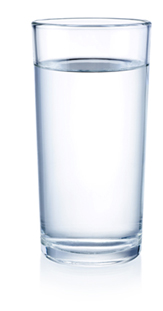
Our good friend, Dr. Lynn Martell at Loma Linda University Cancer Center often reminds us that we don’t drink enough water. And he’s right. One of the most important, and one of the easiest steps we can take to maintaining, or improving our health, is to drink sufficient water. Every few months we use this forum to remind members about some important facts about water:
- 75 percent of Americans are chronically dehydrated.
- Lack of water is the number one trigger of daytime fatigue.
- In 37 percent of Americans, the thirst mechanism is weak, often mistaken for hunger.
- Even mild dehydration will slow down one’s metabolism as much as 3 percent.
- Just a two percent drop in body water can trigger fuzzy short-term memory, trouble with basic math, and difficulty focusing on the computer screen or printed page.
- One glass of water shut down midnight hunger pangs for almost 100 percent of dieters observed in a University of Washington study.
- Drinking five glasses of water daily decreases risk of colon cancer by 45 percent, plus it can slash the risk of breast cancer by 79 percent, and one is 50 percent less likely to develop bladder cancer.
- Research indicates that 8-10 glasses of water a day could significantly ease back joint pain for up to 80 percent of sufferers.
Are you drinking enough water?

A BOB Member’s Story: Monthly Giving
Written by BOB member Ray Hall
When I was diagnosed with prostate cancer in December 2013, I chose the seed implant treatment method (brachytherapy). I thought it would be quick and easy—the least “traumatic” option. The procedure was delayed a few days because I needed to wait for my blood thinner medication to wear off before I began. During that time, I got an unexpected phone call that changed my life. You can say the call was coincidental—I call it providential.
 The call came from a friend in Phoenix; I’d met him five years previously on the golf course in Scottsdale. Bob, a former proton therapy patient and member of the BOB, called because he had heard through a mutual friend that I had prostate cancer. He wanted to know what I planned to do about it. I talked to him about my decision to undergo brachytherapy and pushed aside his efforts to educate me about proton therapy, but after listening to him go on and on; I was soon shaking my head and thinking, yes! Yes!
The call came from a friend in Phoenix; I’d met him five years previously on the golf course in Scottsdale. Bob, a former proton therapy patient and member of the BOB, called because he had heard through a mutual friend that I had prostate cancer. He wanted to know what I planned to do about it. I talked to him about my decision to undergo brachytherapy and pushed aside his efforts to educate me about proton therapy, but after listening to him go on and on; I was soon shaking my head and thinking, yes! Yes!
The main reason I changed my mind was the low risk of side effects associated with proton therapy—also, I didn’t have to lose any body parts and I could remain active throughout the process. In fact, I almost felt guilty to be able to play a round of golf every day during treatment.
My experience with Loma Linda University Cancer Center, from the first phone call to the end of my 45th and final proton treatment, was beyond extraordinary. LLUCC’s “Make Man Whole” mission statement is so much more than a catchy phrase. Every staff member treated me like family, especially the technicians who performed the daily treatments. They were gentle, caring, and highly competent. I feel blessed to have been treated at LLUCC.
I am reminded of a verse from Ephesians 3:20, “God is able to do, exceedingly, abundantly, above all that we ask or even imagine, according to His power in Christ Jesus.”
After returning home, and with careful, prayerful consideration, my wife and I decided to become long-term monthly givers to LLUCC’s proton therapy research program. Being retired and on a fixed income made monthly giving easy—and we feel it’s important to give back.
BOB Comment
Thank you to Ray and Jane Hall for their thoughtfulness and generosity. Your continuing contributions are making a difference in many people’s lives.
Loma Linda University Health’s Vision 2020 Reaches Milestone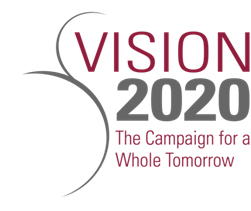
Loma Linda University Health’s philanthropic effort “Vision 2020—The Campaign for a Whole Tomorrow” passed a significant milestone with the announcement that less than $100 million of their $360 million goal remains to be raised. More than $265.6 million has been raised as of July 5.
Rachelle Bussell, CFRE, LLUH’s senior vice president for advancement, said reaching that milestone demonstrates that community and individuals have gotten involved in the effort in amazing ways.
More than 17,400 donors have made more than 94,800 gifts to the Vision 2020 campaign since its launch in 2013. Vision 2020 is the largest philanthropic effort ever undertaken by LLUH, and is intended to support:
- Clinical Care: Funds to complete construction of a new adult hospital and expanded Children’s Hospital, designed to meet California’s stringent seismic building codes for healthcare facilities;
- Education and Research: Support the training of the next generation of healthcare professionals, and challenge the boundaries of scientific research at LLUH;
- Wholeness: Enhanced community programs, seminars and publishing, and additional focus into how people around the world can enjoy lives of wholeness and health.
“This last $100 million is less than one-third of our campaign goal,” Bussell said. “Now we look to people who have not been involved, who are waiting to be involved, or who have not had a chance to be involved. Each gift to Vision 2020 will make a real difference in the lives and health of people in the Inland Empire and around the world.”
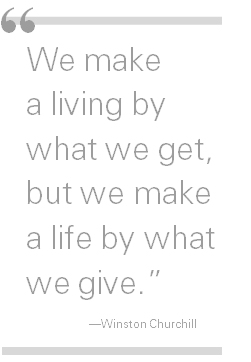 How to Contribute to Proton Research
How to Contribute to Proton Research
- Donate Online: Visit the LLUCC website. Make sure the “Designation Type” is set to “Proton” and the “Designation” is set to “Robert J. Marckini Chair."
- Send a Check: Make your check out to “LLUCC Proton” with “Marckini Chair” on the memo line and send to: LLUH, Office of Philanthropy, P.O. Box 2000, Loma Linda, CA 92354.
- Make a Call: Contribute by phone. Contact Elvia DeHaro at 909-558-5010
- Make a Future Gift: Contact Todd Mekelburg at the Office of Planned Giving at Loma Linda University Health at 909-558-5376 or [email protected].
- Other Ways to Give: Contact Matt Miller at the Office of Philanthropy at Loma Linda University Health at 909-558-3582 or [email protected].

Watermelon—the Nutritional Superstar!
According to family practice physician, Dr. Kevin Soden, here are four reasons to add watermelon to your shopping list:
- Watermelon helps keep your arteries clear. It helps reduce body fat, reduces (bad) LDL cholesterol, and it cleans heart-threatening plaque from your arteries
- It reduces blood pressure and boosts circulation.
- Watermelon contains citrolene, a protein that reportedly lowers systolic blood pressure by as much as nine points.
- Watermelon is loaded with lycopene (40 percent more than tomatoes) which can help ward off heart disease and some cancers, including prostate cancer.
Add to that, watermelon is naturally low in calories – just 48 calories per cup. Watch the video.
14 Foods That Help You Peel Off the Pounds
There are a number of foods you can eat to help you lose weight and live a healthful life. They include the following:
- Apples and Pears: Several studies show that eating apples and pears can help you lose weight. These fruits are rich in fiber, low in calories, and the primary fiber in pears and apples—pectin—forms a gel in the stomach that helps curb hunger.
- Artichokes and Sunchokes: These are filled with cancer-fighting phytochemicals and soluble fibers that help in weight loss.
- Berries: Berries are rich in ketones that help burn fat for energy and stabilize blood sugar levels. A cup of fresh berries has fewer than 60 calories and provides filling fiber too.
- Beans: These disease-fighting antioxidants have as much as 12.5 grams of fiber per cup and help in weight loss programs. Those who eat beans regularly also lower cholesterol and especially LDL levels.
- Fish: Fish is preferred to meat as your meal protein for purposes of general health and weight loss.
- Grapefruit and Grapefruit Juice: A 2011 study in nutrition and metabolism showed that people who had either a serving of grapefruit or a glass of grapefruit juice or water 20 minutes before their meals reduced their daily calorie consumption by up to 29 percent. In a 12-week trial, subjects lost an average of 15 pounds and significantly reduced their belly fat.
- Oatmeal: A study in the European Journal of clinical Nutrition showed that oatmeal was found to have the highest satiety, helping to keep hunger at bay.
- Olive Oil: A study from the German Research Center for Food Chemistry showed that simply smelling olive oil can help curb calorie intake. Also, those who consume yogurts enriched with olive oil experienced the greatest increases in blood levels of serotonin, a hormone associated with satiety.
- Pistachios in the Shell: Pistachios contain protein and fiber, two nutrients that can help you feel fuller.
- Hot Peppers: A study in the British Journal of Nutrition reported that adding red pepper to meals leads people to consume less at their next meal. Another study at Purdue University reported that subjects experienced appetite-suppressing effects when they added this spice to their diet.
- Salad Greens: Salad has a high water-and-fiber combination to help keep you full on fewer calories. A cup of salad greens contains fewer than 20 calories.
- Broth-based Soup: Like salads, soups are low energy density (low-cal, high-fiber) leading to a reduction in overall calories and aiding in weight loss. Studies show that having a bowl of soup 15 minutes prior to a meal can significantly reduce your intake of food by nearly 20 percent.
- Tea: Teas of almost all kinds are rich in antioxidants, which are terrific for heart health. Tea can also help lower waist circumference and lower BMI.
- Plain Greek Yogurt: This food has one of the best protein-to-calorie ratios of any food. One cup of nonfat, plain Greek yogurt contains around 23 grams of protein and just 130 calories. Eating this yogurt helps reduce food craving.
- Learn more.
Series: “Make Vegetables Taste Good”
This is the 12th segment on a subject that’s consistent with our Anticancer series that began in October 2016. We made it our mission to find recipes that make the most healthful vegetables (and other foods, in this case) taste delicious.
Deb’s husband, Mark Hickey, is responsible for the following salad recipe, inspired by his favorite food truck in Boston, Mei Mei, where he buys his daily lunch. “I eat the same salad every day,” Mark told Deb, so they decided to recreate it at home. This was two months ago and they’ve had variations of this dish nearly every night since. “It’s so good, it tastes like it’s bad for you,” Deb says.
Loaded Spinach Salad
Try the ingredients below for your first attempt. Then try mixing things up; add or replace some of the ingredients with farro, chick peas, radishes, artichokes, garbanzo beans, quinoa, dried cranberries, crushed nuts, etc. The following makes two salads. We recommend going organic whenever you can. Note the amounts are just estimates—we throw in whatever looks good!
- Carton of baby spinach
- ½ cup jarred pickled beets
- ½ cup pumpkin seeds
- One large carrot, peeled and sliced
- ½ cucumber, sliced
- ½ green pepper, sliced
- ¼ cup diced red onion
- 1 can, Great Northern white beans, rinsed
- ¼ cup goat cheese (or feta)
- ¼ cup olive oil
- ½ lemon
- salt
You can toss the salad ingredients together and add the white beans on the side (mixed in, these mushy beans will create a mess), or, leave everything separated into piles in a large pasta bowl and choose your bites carefully!
Split the carton of spinach into two large bowls and top with everything but the pumpkin seeds and cheese. Toast the pumpkin seeds in a little olive oil on a skillet over medium heat (until brown)—sprinkle the seeds and goat cheese over the salad. Drizzle with olive oil, lemon juice, and a pinch of salt. Delicious!
The following reader review is the “Top Positive Review” on Amazon. It was written in 2014 and we think it’s a good one.

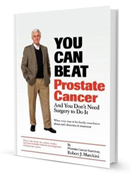
Top Positive Review
The following reader review is the “Top Positive Review” on Amazon. It was written in 2014 and we think it’s a good one.
 This Book Probably Saved My Life
This Book Probably Saved My Life
Bob Marckini’s book probably saved my life. After my diagnosis, I had learned about proton therapy from a friend, and did my due diligence by learning about the treatment through Bob’s book and the Internet. My local urologist, however, had different plans for me, all of which only fell within the scope of his practice. His partner had just got a new DiVinci robotic (read “Ginsu”) machine and was looking for uninformed customers on whom to practice (a good way to die). That was his first recommendation, followed by IMRT. He literally picked up the phone to call another colleague to schedule an appointment to burn out the cancer and whatever nerves and organs that might be in the way. I told him to please put the phone down—I was not interested in either.
—SEW, 5/7/14
Finding Bob’s book after typing in “prostate cancer” on Amazon is still how most of our members first learn about proton treatment. Please help others find their way to proton therapy and the BOB. If you found Bob’s book helpful in your journey to proton therapy and haven’t posted a review on Amazon, please do so today. Just click on the “Write a Review” button.
You Can Beat Prostate Cancer: And You Don’t Need Surgery To Do It
Buy Online, in Bulk or in Spanish
Online: Paperback: $19.00--•--Kindle: $9.99--•--NOOK Book: $9.99--•--Apple iBook: $9.99
In Bulk: Conctact us for a discount price list. Proceeds from book sales support proton therapy research through the Robert J. Marckini Endowed Chair at LLUCC.
In Spanish: Buy the print version or in eBook format.

Did You Know?
A strawberry isn’t a berry, but a banana is. They are derived from a single flower with more than one ovary, making them an aggregate fruit. True berries are simple fruits stemming from one flower with one ovary and typically have several seeds. Tomatoes fall into this group, as do pomegranates and kiwis.
- The strawberry is of the rose family.
- Avocados and watermelon are berries, too.
- Ketchup used to be sold as medicine.
- Carrots were originally purple.
- An average ear of corn has an even number of rows, usually 16.
- Betty White is actually older than sliced bread.
- Humans share 50 percent of their DNA with bananas.
- Honey never spoils. You can eat 32,000-year-old honey.
- Peanuts are not nuts. They are legumes and grow in the ground.

Last Month’s Brain Teaser
Three closed boxes have all white marbles, all black marbles, or a mixture of both. They are labeled: “White,” “Black” and “Both.” However, you're told that each of the labels is wrong. You may reach into one of the boxes and pull out only one marble. Which box should you remove a marble from to determine the contents of all three boxes?
Answer: The one labeled “Both.” Since you know it's labeled incorrectly, it must have all black marbles or all white marbles. After you determine what it contains, you can identify the other two boxes by the process of elimination.
For example, if the box labeled “both” contains a white marble, you know all the rest are white marbles (it cannot be both, since the box is mislabeled). Next look at the box labeled “Black.” You know it has to be mislabeled, so it cannot contain black. It must contain both white and black marbles. And the last box, labeled “Both” must contain black marbles.]\
Winner: One of the reasons we love including brain teasers in our newsletter is because we have the opportunity to get to know our members who write in with answers—their lives are never boring and we are often left with tears in our eyes after learning their stories. Harold Peters of Blackfoot, ID is the July/August brain teaser winner. When we asked him to tell us a little bit about himself, we were amazed at his accomplishments and life-changing decisions. Below is an excerpt from Harold’s story. Read his fascinating story in its entirety on our website.
In 1962 I earned a bachelor’s degree in social studies and religion from Pacific Union College in California. Later, I earned a master’s degree in the teaching of social studies. I spent 30 years in mission service. Twenty-five were spent in Africa as a teacher and administrator. My final five years, before retirement, were spent in Papua, New Guinea where I served as president of Pacific Adventist University.
I first learned of proton therapy while working in Papua, New Guinea. Pacific Adventist University is a sister institution to Loma Linda University, and somehow we got on LLU’s mailing list. Periodically, we received Scope, a magazine for the LLU health community. Since the subscription was addressed to the university president, it came across my desk before being forwarded to the library. Since I had an interest in science, I was fascinated by the magazine’s report of the world’s first hospital-based proton therapy facility—that it had been built at a hospital operated by our church was nothing short of mind-boggling to me! At the time, I had no idea of the impact that article would have on my future.
Upon my retirement to Florida in 2003, a routine physical revealed that I had prostate cancer. I sought the advice of the urologist who had performed surgery a few years earlier for my dad’s enlarged prostate. A flexible man, the urologist was happy to recommend radical prostatectomy, external beam radiation therapy, brachytherapy, or watchful waiting. Because surgery had resulted in my dad wearing Depends for the rest of his life, I was reluctant to go that route, and I had heard disquieting things about the other options, as well. I asked the urologist if he was familiar with Loma Linda University’s proton center and the use of proton radiation for prostate cancer. Unfortunately, he knew nothing about the institution or the modality and was unable to offer any recommendation, either pro or con. It was up to me to do my due diligence.
After extensive research and a couple of phone calls, I came to the same conclusion Bob Marckini shared in his very informative book, You Can Beat Prostate Cancer. I chose proton therapy and was soon on my way to Loma Linda.
While in treatment, I continued my research and concluded that although I had eaten a vegetarian diet all my life, I had unknowingly increased my risk for prostate cancer significantly by the large quantity of cheese I had been consuming. As a result, I immediately removed dairy products from my diet.
 The effectiveness of proton treatment in tandem with a vegan diet tells the rest of my story. At the age of 79, I am in excellent health; have very low PSA; I don’t wear diapers; and I take no medications other than an occasional vitamin B12 capsule … Looking back from the perspective of 13+ cancer-free years, I consider it providential that Scope magazine was addressed to the Pacific Adventist University president rather than the university library.
The effectiveness of proton treatment in tandem with a vegan diet tells the rest of my story. At the age of 79, I am in excellent health; have very low PSA; I don’t wear diapers; and I take no medications other than an occasional vitamin B12 capsule … Looking back from the perspective of 13+ cancer-free years, I consider it providential that Scope magazine was addressed to the Pacific Adventist University president rather than the university library.
Thank you, Dr. James Slater and the Loma Linda administrators and trustees, for your willingness to implement cutting-edge, life-saving, quality-of-life enhancing technology! That technology has enhanced my life.
New Brain Teaser
This is a tough one!
What do the following 23 words/phrases have in common?
Thou, I, not, that, we, to give, who, this, what, man/male, ye, old, mother, to hear, had, fire, to pull, black, to flow, bark, ashes, to spit, worm.
Hint: Two of the 23 words provide an important clue.
Send your answer to [email protected] for a chance to win a signed copy of Bob Marckini’s book, You Can Beat Prostate Cancer.
Our Beautiful English Language
I called an old school friend and asked what he was doing. He replied that he was working on “Aqua-thermal treatment of ceramics, aluminum, and steel under a constrained environment.” I was impressed. However, upon further inquiring, I learned that he was washing dishes with hot water under his wife’s supervision.
Always Ask, Never Assume
His request approved, the TV news photographer quickly used a cell phone to call the local airport to charter a flight. He was told a twin-engine plane would be waiting for him at the airport.
Arriving at the airfield, he spotted a plane warming up outside a hanger. He jumped in with his bag, slammed the door shut, and shouted, “Let’s go!”
The pilot taxied out, swung the plane into the wind, and took off.
Once they were in the air, the photographer instructed the pilot, “Fly over the valley and make low passes so I can take pictures of the fires on the hillsides.”
“Why?” asked the pilot.
“Because I’m a TV news photographer,” he responded, “and I need to get some close-up shots.”
The pilot was strangely silent for a moment. Finally, he stammered, “So, you’re telling me you’re not my flight instructor?!”

Quote of the Month:
“If man does find the solution for world peace it will be the most revolutionary reversal of his record we have ever known.” —George C. Marshall


Friends
Author Unknown
A newlywed young man was sitting on the porch on a hot, humid day sipping ice tea with his father. As he talked about adult life, marriage, responsibilities, and obligations, the father thoughtfully stirred the ice cubes in his glass and cast a clear, sober look on his son. “Never forget your friends,” he advised. “They will become more important as you get older. Regardless of how much you love your family and the children you may have, you will always need friends. Remember to go out with them occasionally; do activities with them, call them . . .”
What strange advice, thought the young man. I just entered the married world, I am an adult and surely my wife and the family that we will create will be everything I need to make sense of my life. Yet he obeyed his father; kept in touch with his friends; and annually increased his number of friends. Over the years, he became aware that his father knew what he was talking about. Inasmuch as time and nature carry out their designs and mysteries on a man, friends were the bulwarks of his life.
After 60 years of life, here is what he learned: Time passes; life goes on; the distance separates. Children grow up; children cease to be children and become independent (and it breaks the parents’ heart), but the children are separated from the parents. Jobs come and go. Illusions, desires, attraction, sex ... weaken. People do not do what they should do. The heart breaks. The parents die. Colleagues forget the favors. The races are over. But true friends are always there, no matter how long or how many miles away they are. A friend is never more distant than the reach of a need, intervening in your favor, waiting for you with open arms or blessing your life.
When we started this adventure called LIFE, we did not know of the incredible joys or sorrows that were ahead. We did not know how much we would need from each other. Love your parents, take care of your children, but keep a group of good friends. Dialogue with them, but do not impose your criteria. You might share this with your friends (even those you seldom see) who help make sense of your life.
Low PSAs to all,
Bob Marckini and Deb Hickey
NO MEDICAL ADVICE: Material appearing here represents opinions offered by non-medically-trained laypersons. Comments shown here should NEVER be interpreted as specific medical advice and must be used only as background information when consulting with a qualified medical professional.
